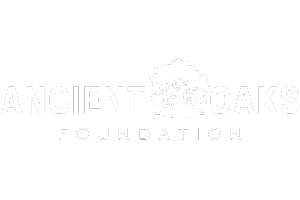Cash Cash Cash
FOR CONSERVATION!
Cash Cash Cash
FOR CONSERVATION!
Buckthorn Bounty
We need you! We’re paying citizens* to help protect the local ecosystem by removing the invasive species Buckthorn (rhamnus cathartica) from their private properties.
Sign up is free!
*At this time we are only accepting applications from residents within the 60047.
Buckthorn Bounty
We need you! We’re paying citizens to help protect the local ecosystem by removing the invasive species Buckthorn (rhamnus cathartica) from their private properties.
Sign up is free!
Here’s How it Works:
1. Take 3-5 pictures of your Buckthorn infestation
2. Register your name and address and upload your photo.
3. We’ll contact you with instructions and even come do a site visit!
4. Remove your buckthorn using the methods that we recommend.
5. Upload your “after” photos Using the Same Form
6. We’ll Send You a check!
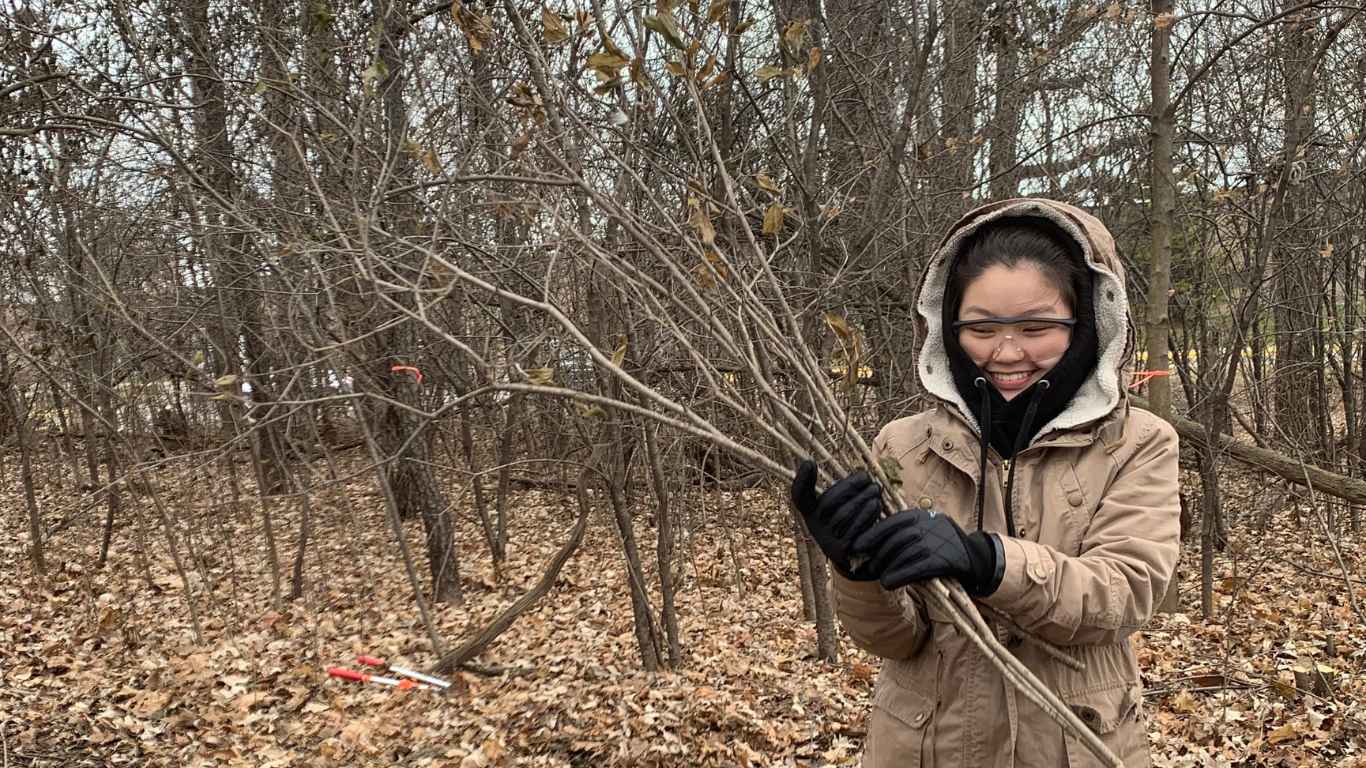
On this page you will find everything you need to know to control buckthorn on your property. But feel free to reach out to us with any questions!
Remove your buckthorn using the methods that we recommend.
We HIGHLY encourage you to herbicide treat your stumps to aid in preventing resprouts. (Whether you decide to DIY or use professional removal services does not matter to AOF just so long as you remove this invasive species)
When buckthorn on your property has been removed, contact AOF by filling out the form again. We will visit your property and count the number of buckthorn that have been removed.
Before you begin, watch this video about How to Remove Buckthorn
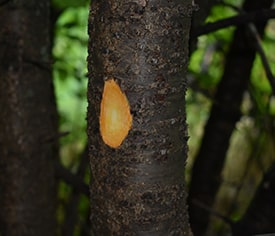
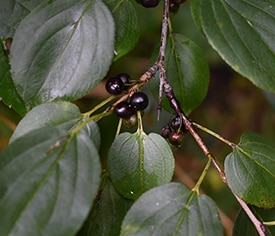
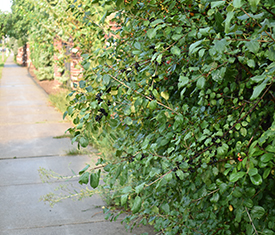
More About European Buckthorn
European Buckthorn (Rhamnus cathartica) is a shrub that grows up to 25 feet tall. It is a European native which comes as male or female. It was brought to the U.S. in the 1840s and farmers used it as natural fencing. Unfortunately, it has no natural predators or diseases to limit its spread. It has overtaken natural and residential areas in much of Northern Illinois.
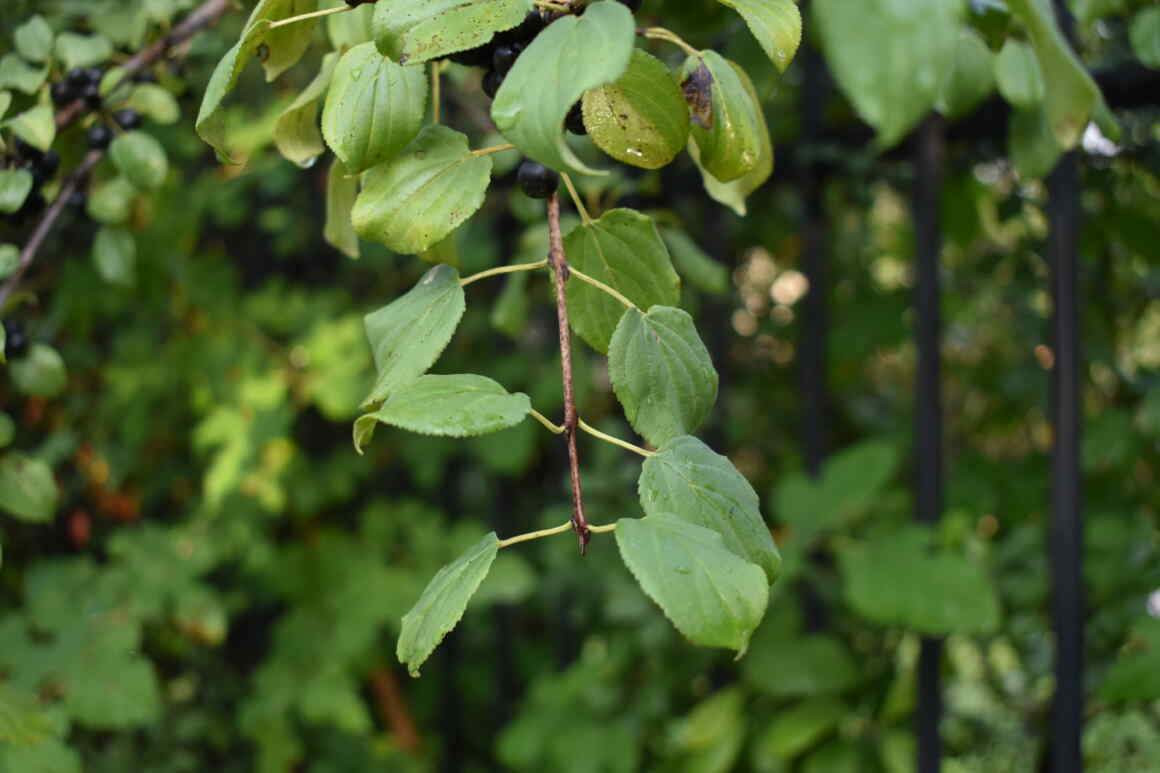
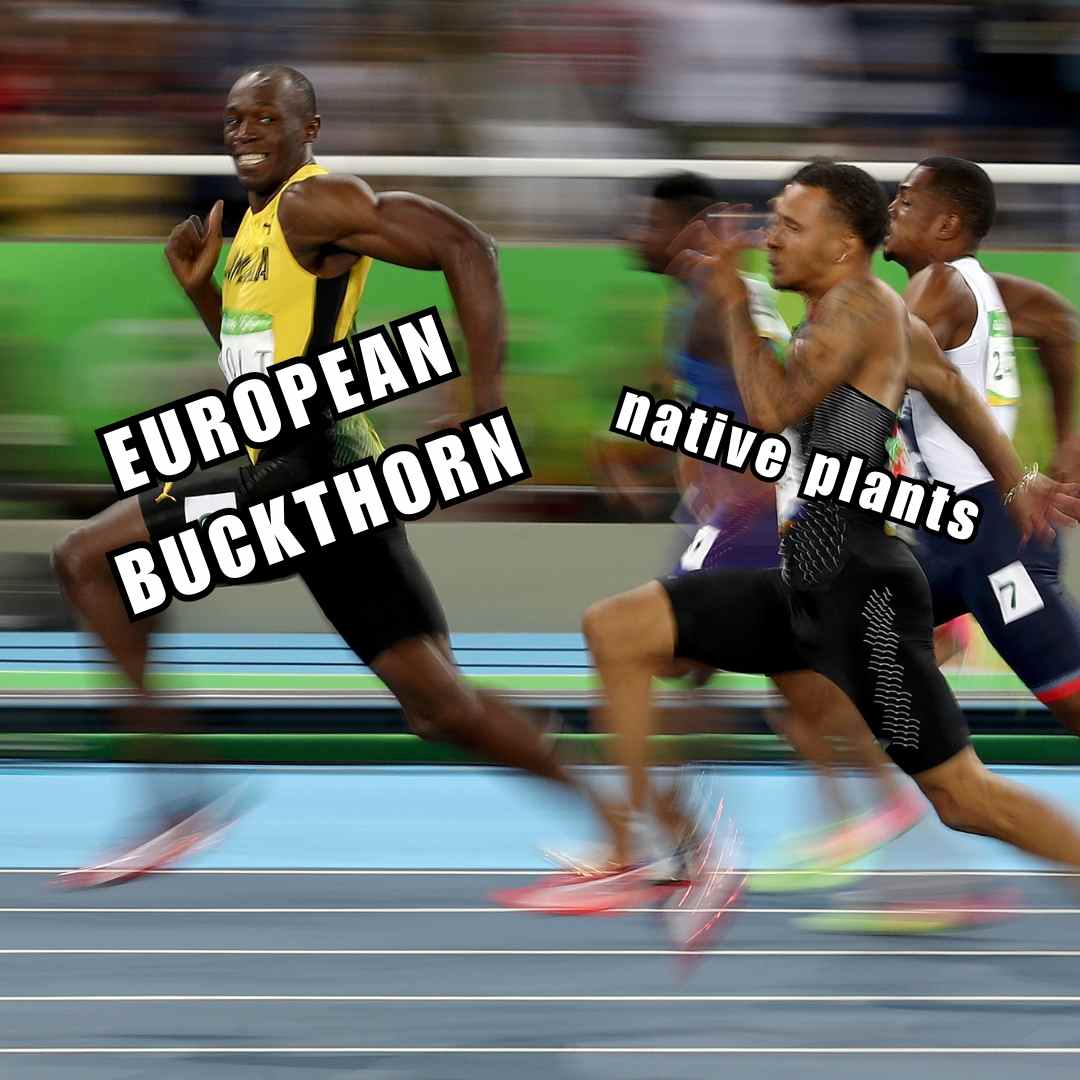
Why is Buckthorn so destructive?
The buckthorn is like the speed demon of plants, leaving our native plants struggling to keep up. Buckthorn is also sneaky in how it spreads. A mature female plant can make thousands of purple berries. Birds chow down on these berries, and when they, ahem, leave them behind, the seeds end up sprouting near trees and fences. These seeds hog the sunlight and soil nutrients, especially close to trees and fences. In just a few years, Buckthorn takes over, shading out the plants we actually want in our neighborhoods and natural spots.
But that’s not all. Buckthorn’s roots release a chemical that stops native plants from growing. This means the good plants can’t make more of themselves, which is bad news for your landscape. It not only loses value in terms of money but also messes with the balance of nature around you.
Detailed Buckthorn Control Directions
You may be surprised and overwhelmed by the amount of buckthorn on your property. But it can be done! You’ll need a plan and persistence.
When to remove buckthorn The most effective time to remove buckthorn is in the fall and winter. Nearby valuable plants are dormant and will not be damaged by trampling and (if using) herbicide use. During this time its sap- and any herbicide you use- is descending into the roots.
Removal Priorities
Your first priority should be buckthorn that is producing berries (female plants). This immediately stops the dissemination of more buckthorn berries to nearby areas. Your second priority should be seedings or small buckthorn plants. Your third priority can be an area in which buckthorn is not too dense. Start with the seedlings first, then larger shrubs.
Removal Methods
Remove small plants by the roots either by pulling by hand or use an Uprooter (www.uprooter.com) or other weed wrenchs. Remove by pulling out by the root, usually when the stem is 3/8” or smaller in diameter. Moist soil helps to ease removal. Pull slowly and evenly to remove to the end of the root system as it can run shallowly beneath the soil for several feet. These areas will not require herbicides and should not re-sprout if you’ve removed the entire root. Tamp down the disturbed soil after you’ve uprooted the plants. We have an Uprooter for you to “try before you buy”. Contact us at info@ancientoaksfoundation.org for details. Cut larger plants (over 1-2 inch diameter) with hand tools such as hand pruners, loppers pruning saws, or gas powered brush cutters, leaving a 1-2 inch high stump. If using a chain saw, follow all safety precautions, and use protective personal equipment.
Methods to Prevent Resprouting
It is an exercise in futility to cut buckthorn and not treat the stumps. Buckthorn emits a chemical called emodin, which, when the plant is injured, sends the signal to begin producing resprouts- sometimes as many as 25 or 30 within the first year after cutting. You will not escape this and will be well served to treat the stumps using the methods listed here:
Chemical Control
Brush or spray each stump with an undiluted herbicide containing triclopyr or glyphosate at the highest concentration you can find. Some examples that can be found at local home centers and hardware stores: Roundup Concentrate Plus (18% glyphosate) Ortho Weed B Gone ( 8% triclopyr) Ortho Poison Ivy Killer (8% triclopyr) There are other brand names- purchase the highest concentration you can find. Assemble your tools: Old jar/ plastic container with a wide mouth Old paint brush PPE- long sleeves, water resistant gloves, eye protection Pour a small amount of herbicide into an old jar/plastic container or spray bottle that has been labeled with contents for safety. If using a spray bottle, simply pour in the undiluted herbicide and reattach the sprayer nozzle. Always follow label instructions for herbicide disposal and store any excess in the original bottle or a clearly marked container with a lid. Paint or spray the herbicide onto the cut surface of the stump concentrating attention to the outside ring of bark (cambium) where new growth occurs. On larger stumps you do not need to soak the whole stump as no sap moves in the center of the tree- only the outer ring. Avoid soaking the soil near the stump. Treat each stump. If you miss some you will find out which ones when they resprout- and they will!
Non- Chemical control
If you don’t want to use chemicals on your property there are non-chemical control options. These methods take longer to achieve plant death and can be unsightly but, if done properly can be effective. Simply cover each cut stump down to the soil with a used can or black plastic bag such as a “Buckthorn Baggie”(www.buckthornbaggie.com) to prevent re-sprouting. Use nails to affix the can or a tie to affix the black plastic. Leave in place for one to two years.
Disposal of brush piles
Dispose of cut brush following your municipalities regulations for disposing of yard waste. If allowed in your area, brush piles can be burned. If you have a large amount of cut brush, local lawn care and tree companies will remove it for a fee. We recommend Davey Tree Experts in Long Grove. They will also professionally remove your buckthorn. Davey Tree Services In Barrington, IL | Davey Tree.
Follow-up control Buckthorn seeds can remain viable in the soil for up to five years and resprouts can happen, even with stump treatment. During the growing season, do a monthly review of the restored area and remove any resprouts that may have escaped treatment.
Replacing buckthorn with native plants
Consider replacing buckthorn with native plants, shrubs and trees. The Chicago Regional Tree Initiative provides an extensive list of replacement native shrubs that work well in our midwestern landscape. Brochure-11×17-Healthy-Hedges-update-20190412.pdf (chicagorti.org)
Additional information:
Other Invasive Plants to Watch For When Eliminating Buckthorn
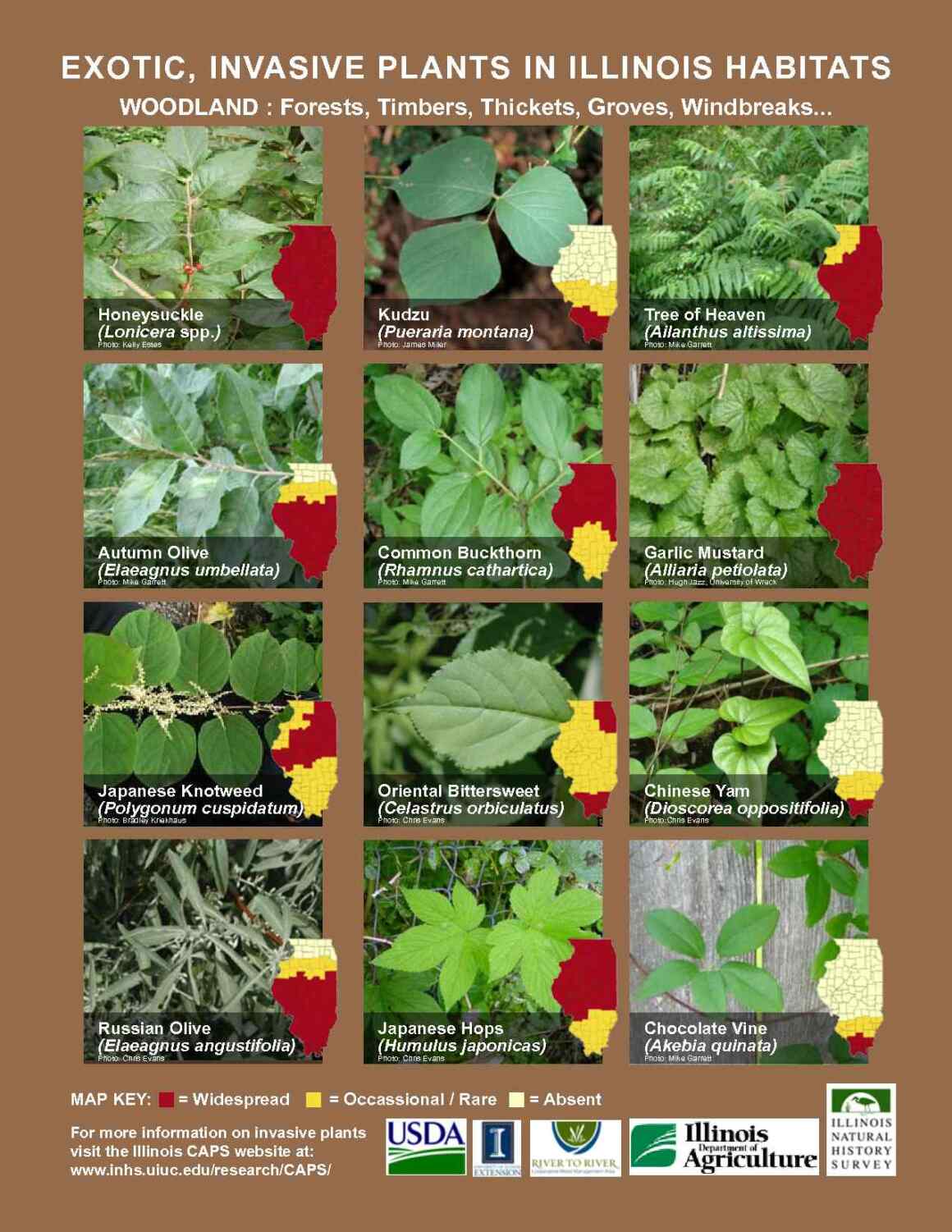
Also refer to these other links for more information on invasive species in Illinois:
Detailed Buckthorn Control Direction
You may be surprised and overwhelmed by the amount of buckthorn on your property. But it can be done! You’ll need a plan and persistence.
When to remove buckthorn The most effective time to remove buckthorn is in the fall and winter. Nearby valuable plants are dormant and will not be damaged by trampling and (if using) herbicide use. During this time its sap- and any herbicide you use- is descending into the roots.
Removal Priorities
Your first priority should be buckthorn that is producing berries (female plants). This immediately stops the dissemination of more buckthorn berries to nearby areas. Your second priority should be seedings or small buckthorn plants. Your third priority can be an area in which buckthorn is not too dense. Start with the seedlings first, then larger shrubs.
Removal Methods
Remove small plants by the roots either by pulling by hand or use an Uprooter (www.uprooter.com) or other weed wrenchs. Remove by pulling out by the root, usually when the stem is 3/8” or smaller in diameter. Moist soil helps to ease removal. Pull slowly and evenly to remove to the end of the root system as it can run shallowly beneath the soil for several feet. These areas will not require herbicides and should not re-sprout if you’ve removed the entire root. Tamp down the disturbed soil after you’ve uprooted the plants. We have an Uprooter for you to “try before you buy”. Contact us at info@ancientoaksfoundation.org for details. Cut larger plants (over 1-2 inch diameter) with hand tools such as hand pruners, loppers pruning saws, or gas powered brush cutters, leaving a 1-2 inch high stump. If using a chain saw, follow all safety precautions, and use protective personal equipment.
Methods to Prevent Resprouting
It is an exercise in futility to cut buckthorn and not treat the stumps. Buckthorn emits a chemical called emodin, which, when the plant is injured, sends the signal to begin producing resprouts- sometimes as many as 25 or 30 within the first year after cutting. You will not escape this and will be well served to treat the stumps using the methods listed here:
Chemical Control
Brush or spray each stump with an undiluted herbicide containing triclopyr or glyphosate at the highest concentration you can find. Some examples that can be found at local home centers and hardware stores: Roundup Concentrate Plus (18% glyphosate) Ortho Weed B Gone ( 8% triclopyr) Ortho Poison Ivy Killer (8% triclopyr) There are other brand names- purchase the highest concentration you can find. Assemble your tools: Old jar/ plastic container with a wide mouth Old paint brush PPE- long sleeves, water resistant gloves, eye protection Pour a small amount of herbicide into an old jar/plastic container or spray bottle that has been labeled with contents for safety. If using a spray bottle, simply pour in the undiluted herbicide and reattach the sprayer nozzle. Always follow label instructions for herbicide disposal and store any excess in the original bottle or a clearly marked container with a lid. Paint or spray the herbicide onto the cut surface of the stump concentrating attention to the outside ring of bark (cambium) where new growth occurs. On larger stumps you do not need to soak the whole stump as no sap moves in the center of the tree- only the outer ring. Avoid soaking the soil near the stump. Treat each stump. If you miss some you will find out which ones when they resprout- and they will!
Non- Chemical control
If you don’t want to use chemicals on your property there are non-chemical control options. These methods take longer to achieve plant death and can be unsightly but, if done properly can be effective. Simply cover each cut stump down to the soil with a used can or black plastic bag such as a “Buckthorn Baggie”(www.buckthornbaggie.com) to prevent re-sprouting. Use nails to affix the can or a tie to affix the black plastic. Leave in place for one to two years.
Disposal of brush piles
Dispose of cut brush following your municipalities regulations for disposing of yard waste. If allowed in your area, brush piles can be burned. If you have a large amount of cut brush, local lawn care and tree companies will remove it for a fee. We recommend Davey Tree Experts in Long Grove. They will also professionally remove your buckthorn. Davey Tree Services In Barrington, IL | Davey Tree.
Follow-up control Buckthorn seeds can remain viable in the soil for up to five years and resprouts can happen, even with stump treatment. During the growing season, do a monthly review of the restored area and remove any resprouts that may have escaped treatment.
Replacing buckthorn with native plants
Consider replacing buckthorn with native plants, shrubs and trees. The Chicago Regional Tree Initiative provides an extensive list of replacement native shrubs that work well in our midwestern landscape. Brochure-11×17-Healthy-Hedges-update-20190412.pdf (chicagorti.org)
Additional information:
Other Invasive Plants to Watch For When Eliminating Buckthorn

Also refer to these other links for more information on invasive species in Illinois:
BECOME A BUCKTHORN BUSTER
We provide Buckthorn Assessments on your property. During a brief visit we will:
Locate representative Buckthorn specimens
Identify and tag the samples
Provide detailed removal instructions
Offer ecologically valuable replacement suggestions
Suggest preferred providers for professional removal
$75 assessment fee
(includes individual annual membership to AOF)
Current donors receive $50 off the assessment fee. Please email us to register.
You may register for a Buckthorn Assessment and still be eligible for our Buckthorn Bounty Program.

